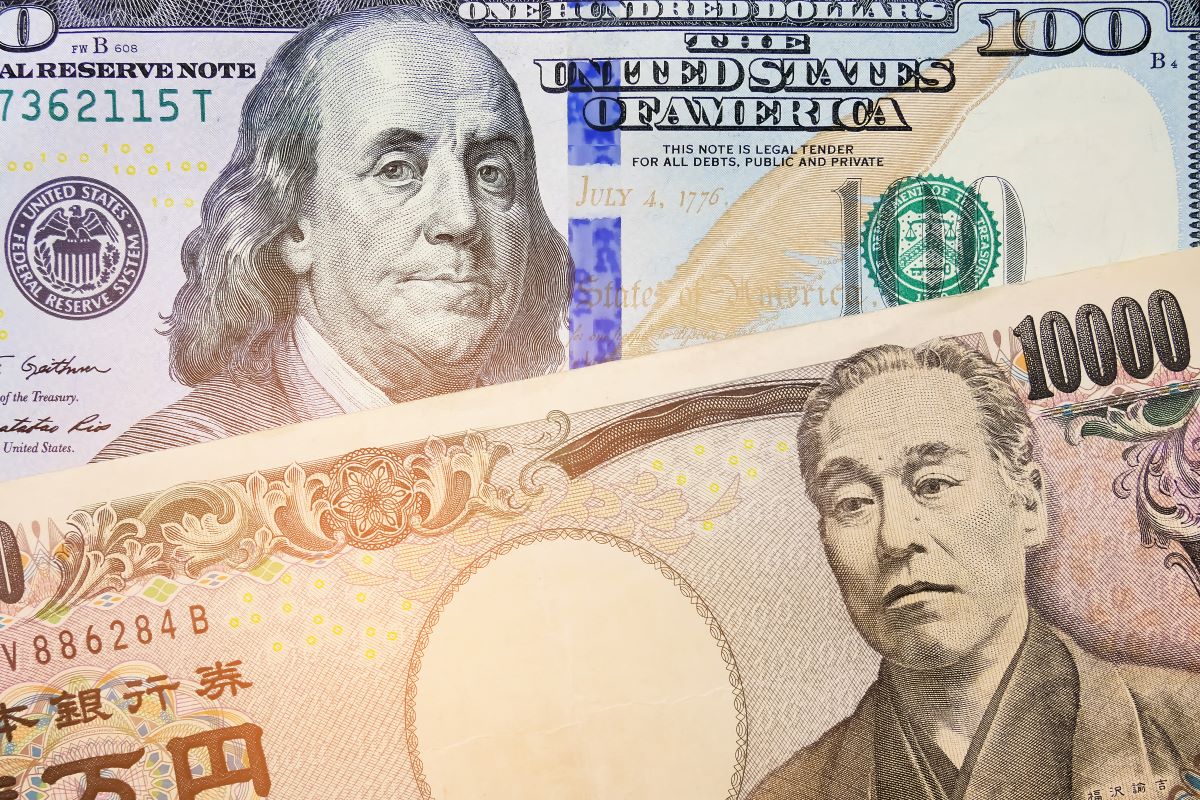The Yen continued to weaken against the US Dollar after Federal Reserve Chairman Jerome Powell hinted at further rate hikes in his Jackson Hole speech. The yen touched the 147 mark, and now continues to hover around the upper 146 range against the US Dollar.
According to recent data from the Bank of Japan, the purchasing power of the Japanese currency against the U.S. dollar and the euro has fallen to its lowest level in 53 years. The real effective exchange rate was 74.31 in July.
What does a weaker yen mean for the economy?
As a result of the weak yen, imported goods, especially gasoline and food products, have become costlier. Japan’s nationwide average retail price of regular gasoline rose to 185.6 yen ($1.27) per litre during the week ended August 28. This was the highest level since 1990.
Companies have passed on the rising import costs of raw materials to their retail goods prices rather quickly. However, the service sector hasn’t yet done the same. The return of inflation after twenty-five years of deflation is making consumers unsettled as they have become very price-sensitive.
A survey on food items conducted by Credit research firm Teikoku Databank has predicted that there will be a price rise on a total of 35,000 items by the end of 2023. It further predicts a maximum rise in October.
Experts believe that if the yen stays at around 145 to the US Dollar, households will have to bear additional burden in fiscal 2022 and 2023. The burden is likely to be particularly more for the lower-income bracket.
Japan has been grappling with deflation for more than two decades. In its latest annual economic and fiscal policy report, the nation indicated that with rising prices and wage growth, the deflationary cycle is all set to break. However, it is yet to formally declare an end to deflation as the current price rises are largely due to higher import costs. Also, experts doubt the sustainability of real wage growth.
Usually, a weak yen boosts exports, but Japan hasn’t seen substantial growth on that front due to its diminishing international competitiveness. In July, the exports fell for the first time in two years. Contrary to analyst expectations of a wider surplus, Japan posted a trade deficit of $78.7 bn yen. Robbie Boukhoufane, fixed income, and currency portfolio manager at Schroders, said, “Japan is vulnerable to the sharp rise in commodities, with imports continuing to surge – driven by soaring energy prices – while export gains have also slowed.” This is primarily because of ‘offshoring’, the process through which several Japanese manufacturers have shifted their factories to lower-cost countries.
Government actions to counter the impact of weaker yen
Earlier this week, Prime Minister Fumio Kishida announced that his government would extend existing gasoline subsidies through the end of September with an aim to lower the price of gasoline to around 175 yen a litre in October. The subsidy program also includes light oil, kerosene, and heavy oil.
The high import prices-driven inflation has the government concerned about the citizens. According to market watchers, the Japanese government is planning to announce a stimulus package in September to counter the downside risk of inflation and boost growth.
Economic and Fiscal Policy Minister Shigeyuki Goto stated, “We will keep an eye on price and economic trends and their impact on people’s lives, and respond flexibly, if necessary.” The package is likely to include subsidies and other forms of support to small and mid-sized businesses. This would allow companies to exercise discretion in passing the costs to the consumers. Parallelly, Kishida’s government is also working to boost the export value of agricultural and fisheries products and other food items to 2 tn yen by 2025.
Analysts believe that over the long term, the weak yen will help exports rebound and help the Japanese economy. In its latest monthly report, the Government also indicated that the ‘exports have been ‘picking up recently’. As a supply chain bottleneck diminishes, auto-shipments and semiconductor exports are likely to gain momentum.
Japan’s latest GDP figures also revealed a positive uptick in exports. Rumi Kurumizawa, Chief Economist at Nomura says, “Last year, supply constraints and pandemic-related border measures made it difficult for the positive sides of a weaker yen to take effect.” But she is optimistic that “this year is likely to contribute especially to an increase in inbound tourism”.










 Australia
Australia China
China India
India Indonesia
Indonesia Japan
Japan Malaysia
Malaysia Philippines
Philippines Singapore
Singapore South Korea
South Korea Taiwan
Taiwan Thailand
Thailand Vietnam
Vietnam Germany
Germany Hong Kong
Hong Kong USA
USA Switzerland
Switzerland Singapore
Singapore
 United Kingdom
United Kingdom








